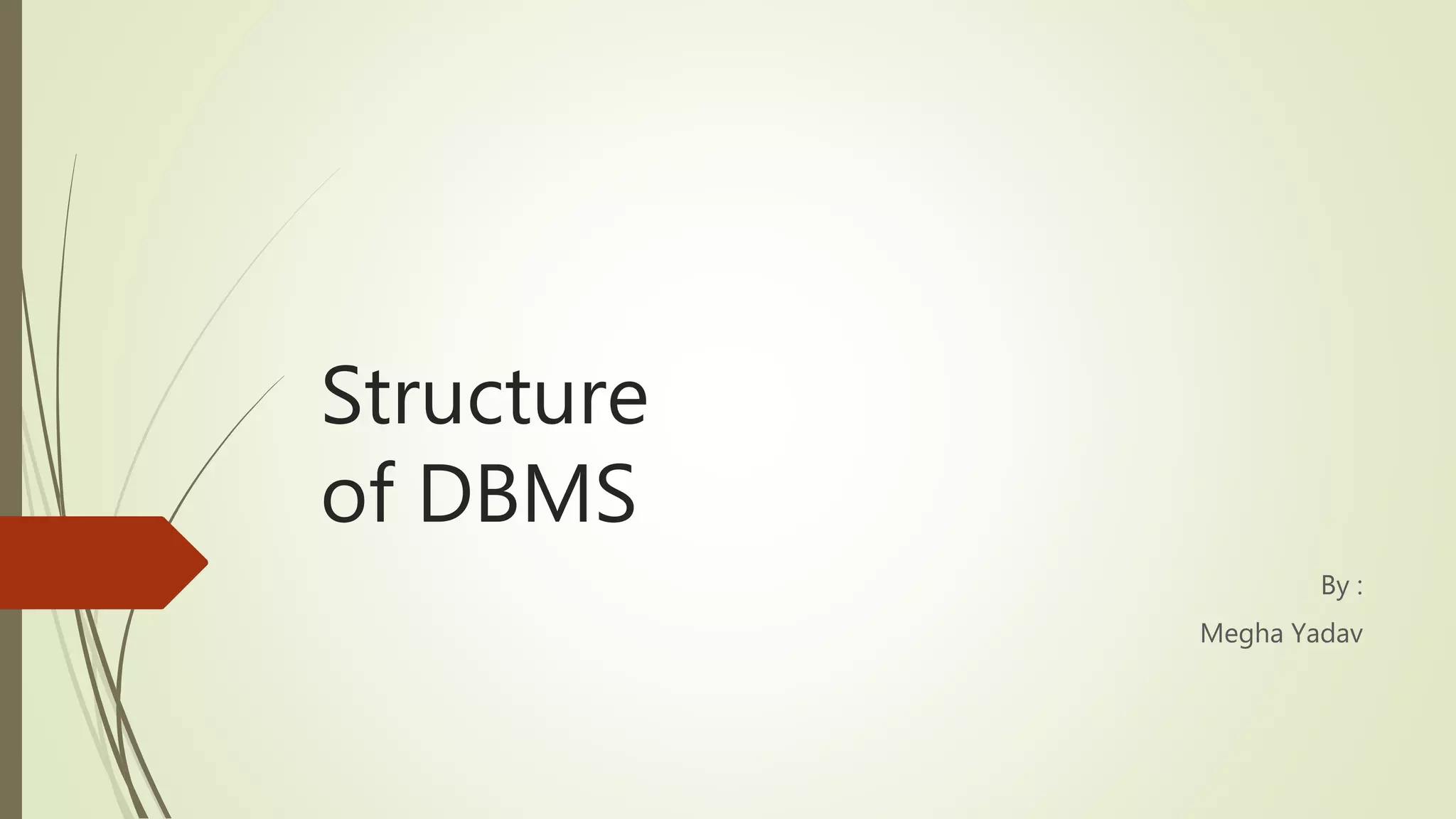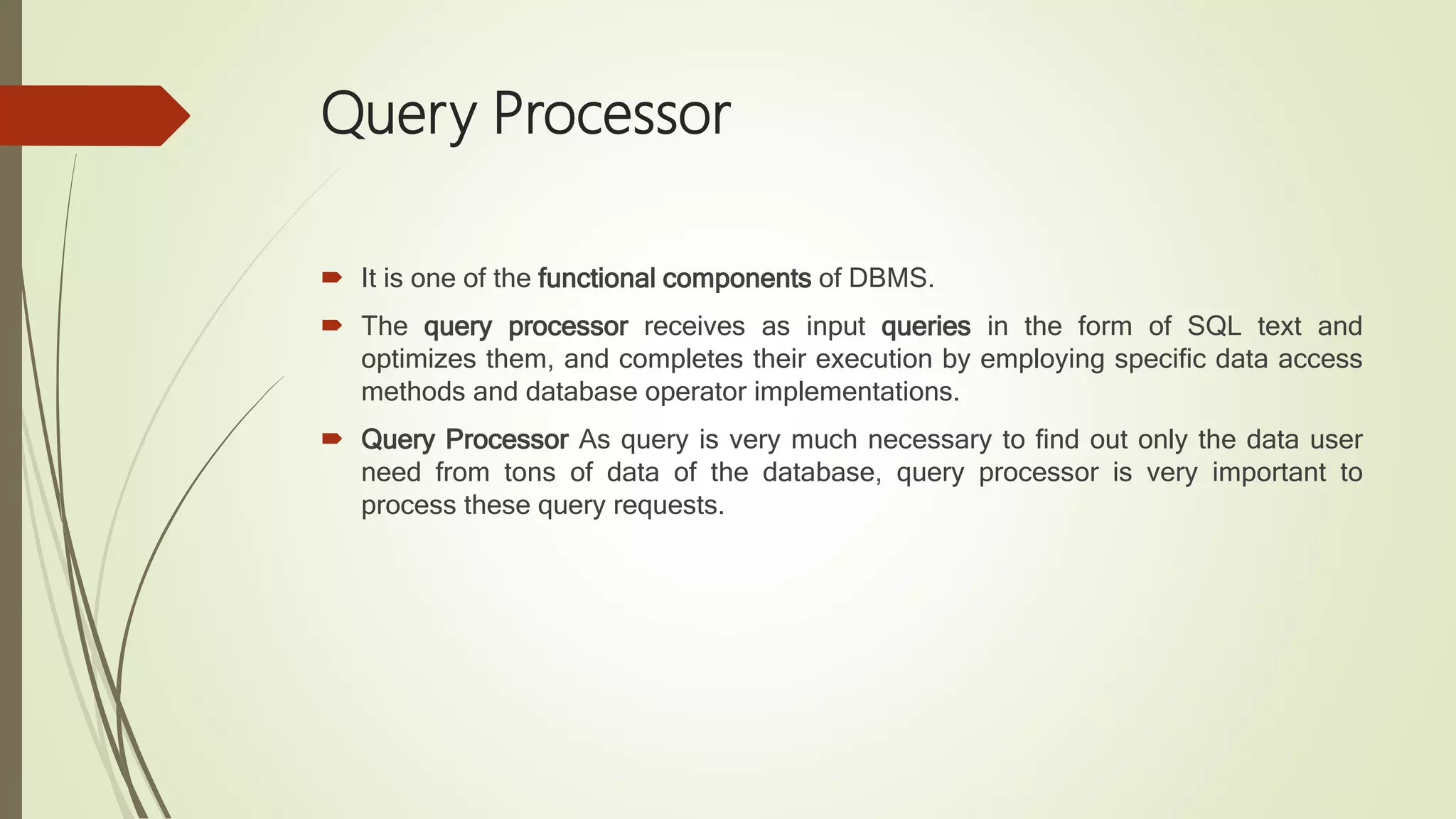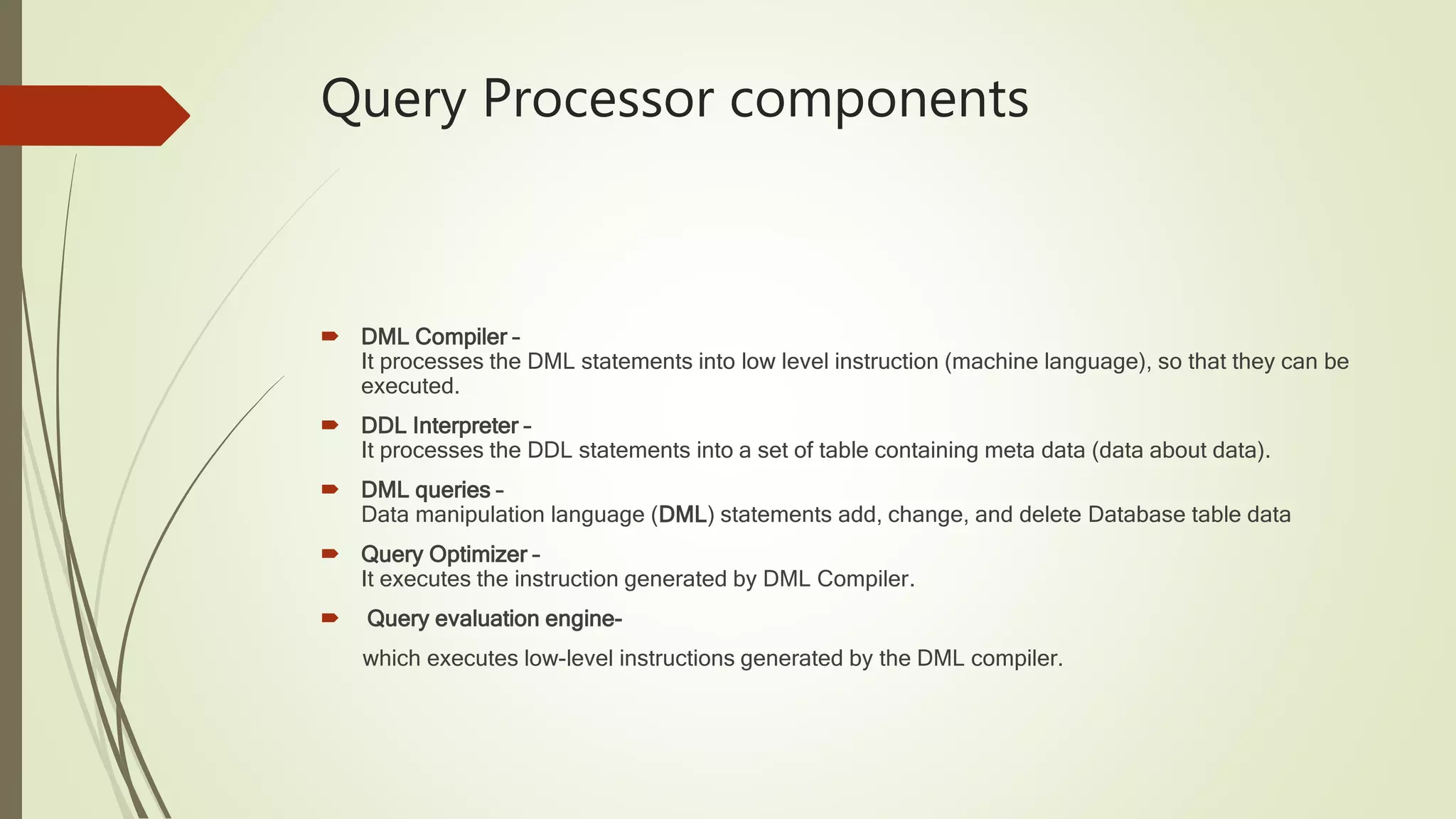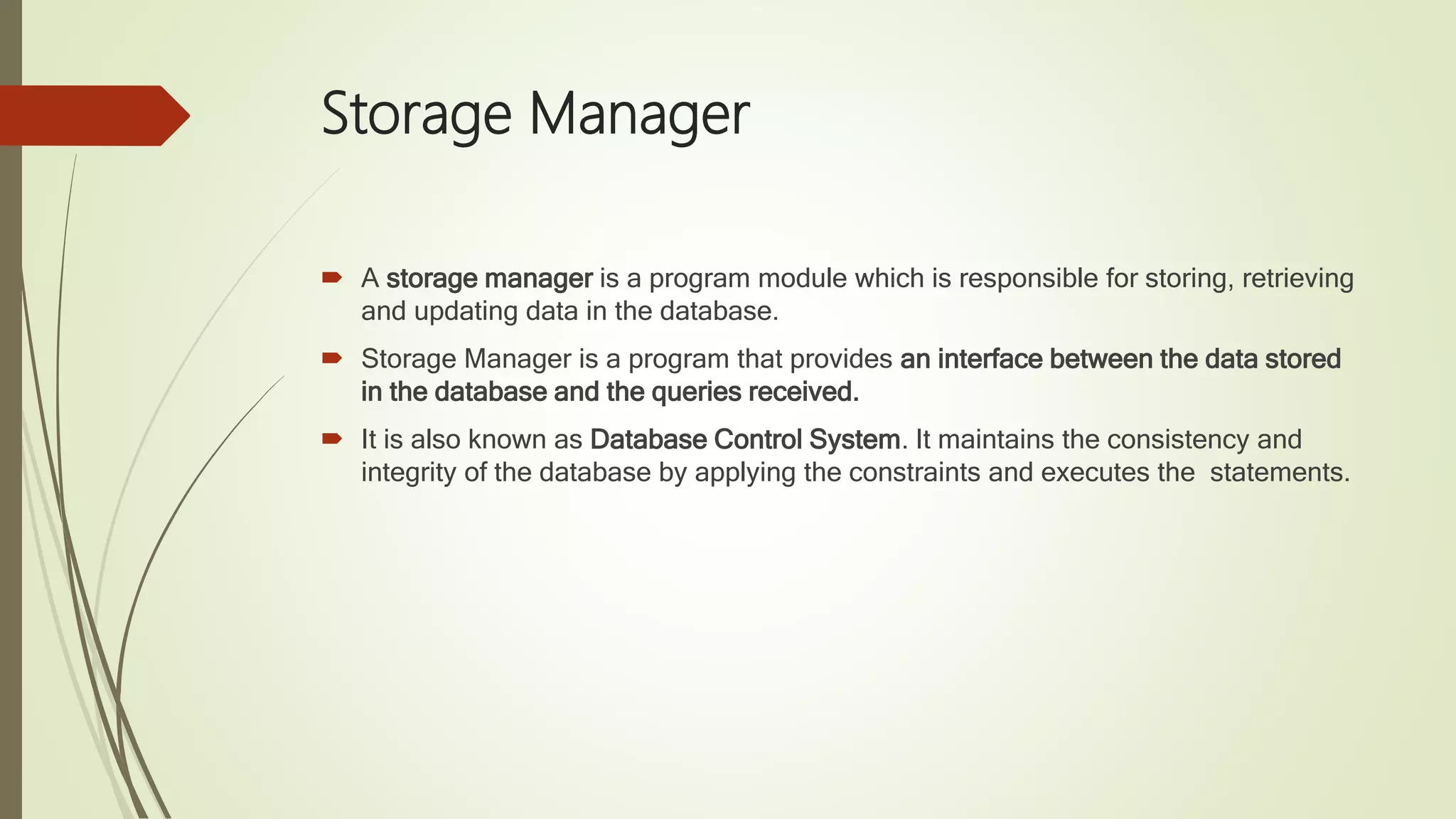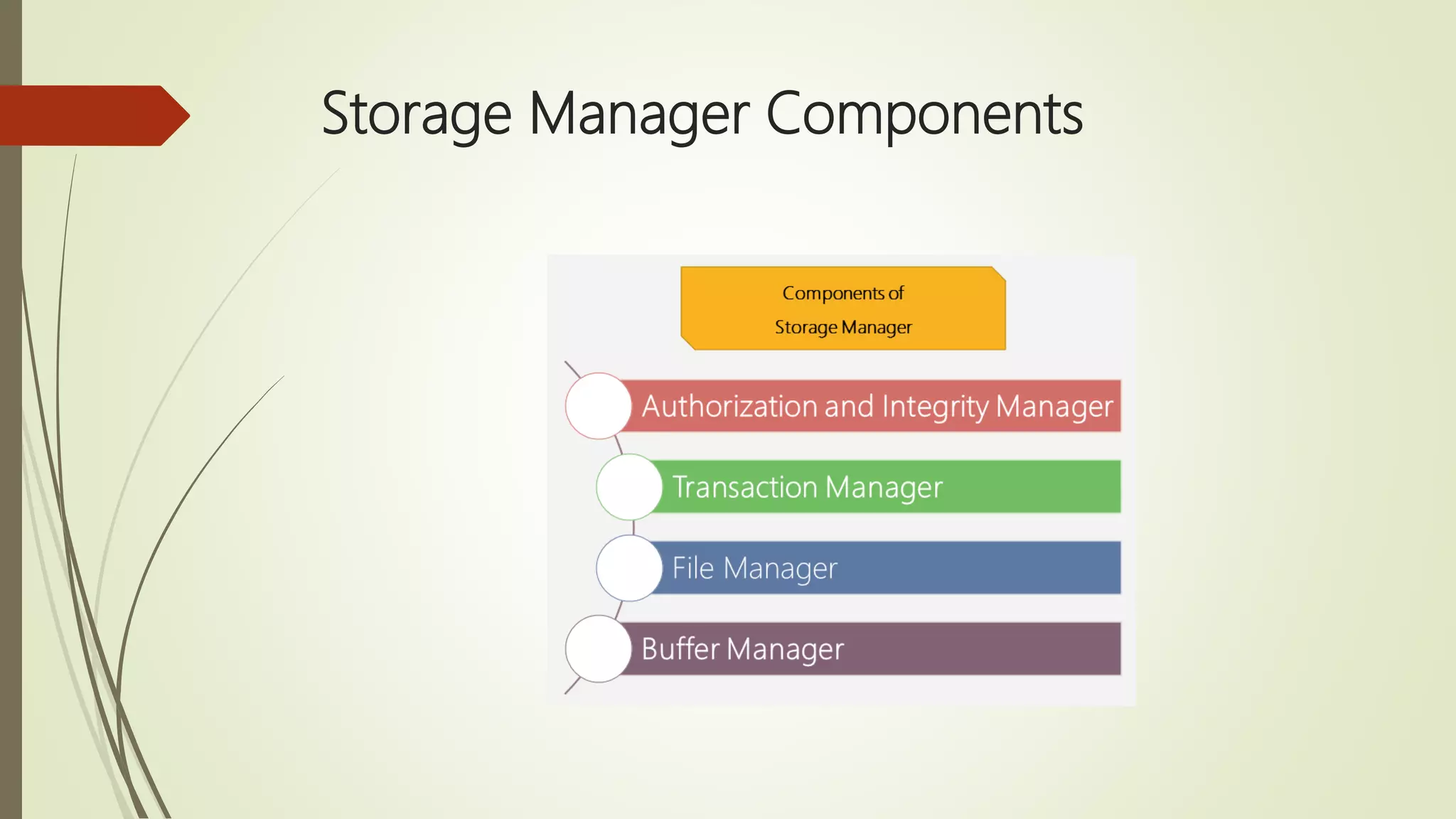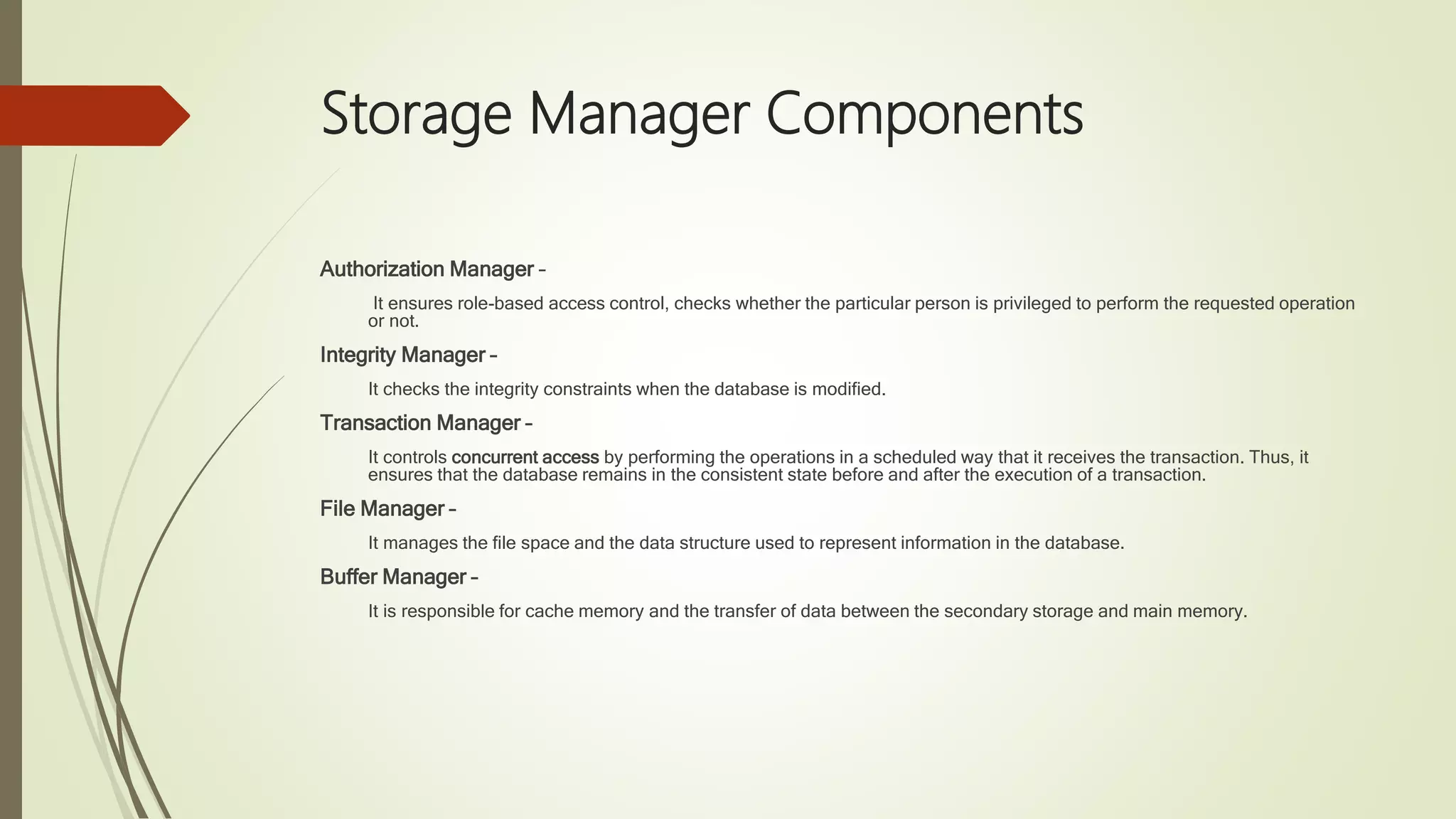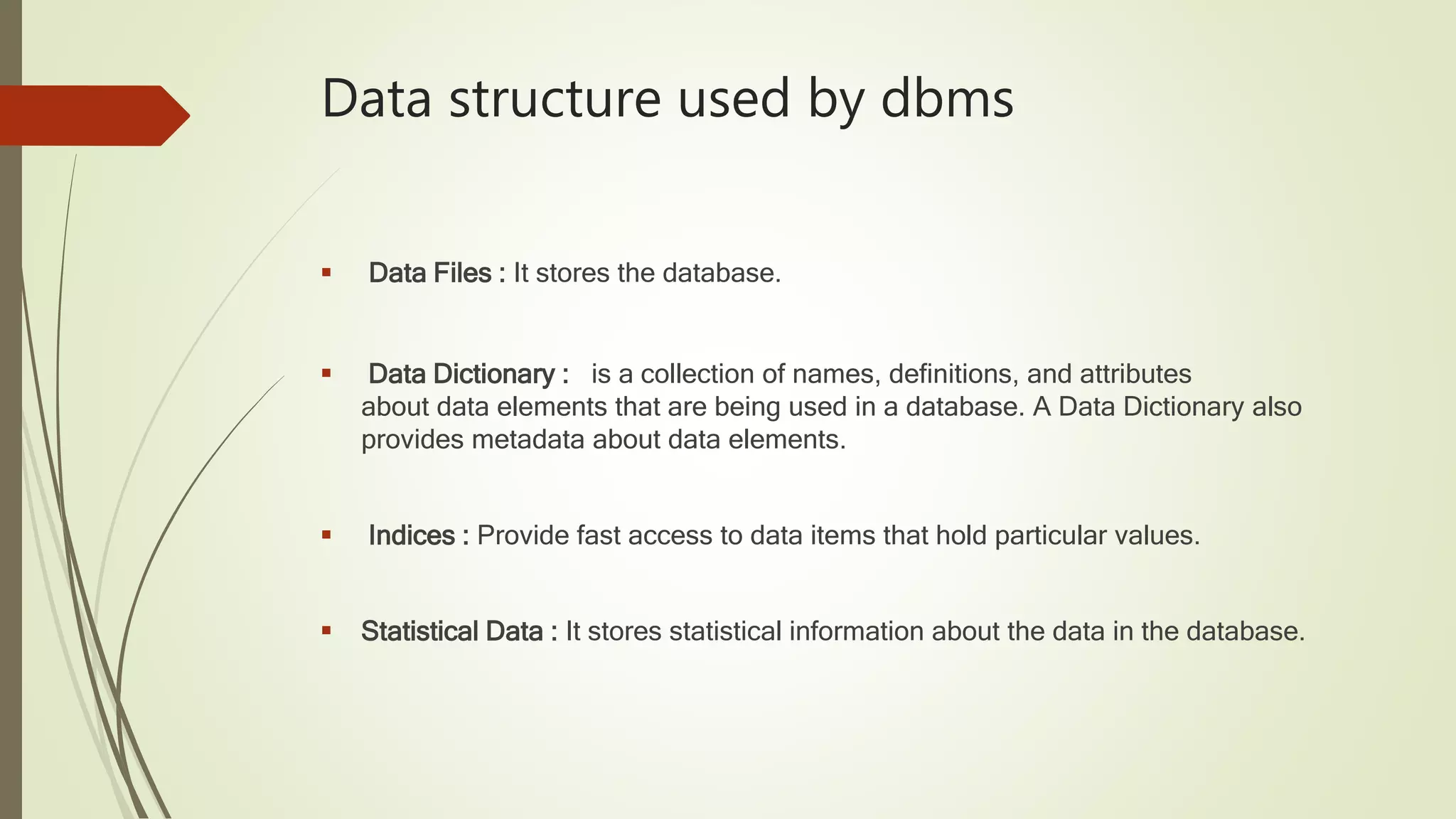The document discusses the architecture and components of a database management system (DBMS). It describes that a DBMS is divided into modules including a query processor and storage manager. The query processor receives and optimizes SQL queries, while the storage manager is responsible for storing, retrieving, and updating data through components like a buffer manager, file manager, and transaction manager. The document also outlines some common data structures used in a DBMS like data files, data dictionaries, and indices.
